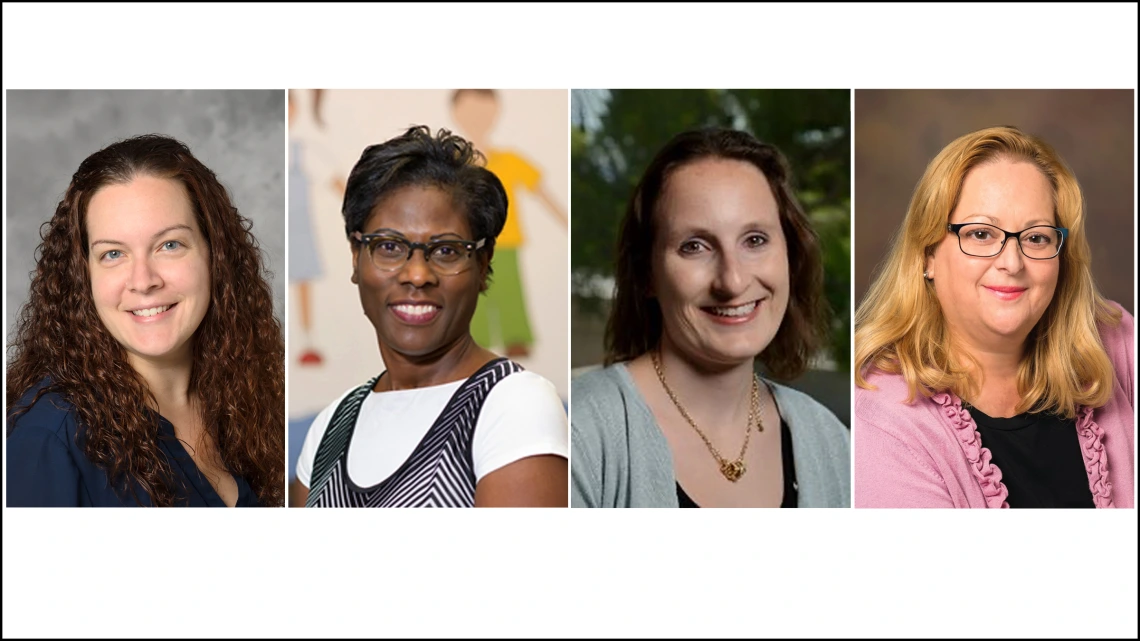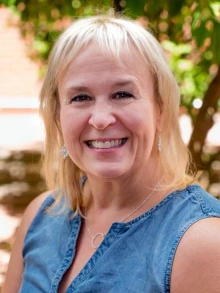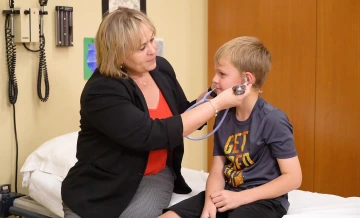First Autism Diagnosis Certificate Students Set to Graduate
A new certificate program helps nurse practitioners provide early diagnosis and health services for children on the autism spectrum.

The first cohort of students in the University of Arizona College of Nursing’s Autism Spectrum Diagnosis Certificate Nurse Practitioner Program. From left: Allison Crawford, Cleo Park, Mary Beth Piraino, Cynthia Garcia.
Over the past 20 years, the number of children identified with autism spectrum disorder has increased from about 1 in 150 to 1 in 54. In 2018, insurance provider Arizona Complete Health approached the University of Arizona Health Sciences and expressed a need for specialized providers to help serve the growing number of kids on the spectrum.

Gloanna Peek, PhD, CPNP, RN
Gloanna Peek, PhD, CPNP, RN, is coordinator of the Autism Spectrum Diagnosis Certificate Program and a clinical associate professor in the College of Nursing. The new certificate is a way for Health Sciences to help bolster the next generation of nurse practitioners, giving them an extra tool in their patient care kit.
The certificate program allows full-time nurse practitioners to enhance their education by learning more about diagnosing, managing and treating autism spectrum disorders. The students learn from weekly interactions with other experts, including: speech language pathologists, psychologists, psychiatrists, developmental pediatricians, nurse practitioners, behavioral therapists and more.
“Having people like that at the same table, and knowing that everybody is united and wanting to see the best outcomes for the kids and the families is gratifying,” Peek said.
Four students, one year, better patient outcomes
The first cohort of four students has nearly completed the year-long certificate program. They will leave prepared to sit for a licensing board exam to diagnose and manage treatment for children with autism spectrum disorder. They will also develop new peers for life, Peek said.
“I purposely wanted the cohort to be small from the outset to make sure that we were meeting the students’ needs and the patients’ needs,” she said, especially as the program continues to evolve. “All of them are already nurse practitioners who work in specialty clinics and who are seeing these kids, but unable to diagnose and manage their care.”

Gloanna Peek, PhD, CPNP, RN, has worked with children for her entire health care career, from bedside nursing to her role as a clinical professor and coordinator of the Autism Spectrum Diagnosis Certificate.
“They knew that we were learning from them as much as they were learning from us,” she said. “It's been a great experience of coming together and really building that cohort.”
Because the program is for those who are already nurse practitioners working full time in a clinical setting, the results were evident quickly.
“Not only have our nurse practitioners-students identified autism spectrum disorder in patients, and got kids into services sooner, but they've also diagnosed kids that weren’t on the spectrum, and directed them into appropriate services,” Peek said.
Her experience tells her that’s the most important part of the process.
“I do feel like the sooner you can look at a child and see what additional services they need – not only the kids, but the family too – the better it is in the long run, the more support they have along the journey.”
‘We’ve come a long way’
“The sooner you can look at a child and see what additional services they need…the better it is in the long run.”Gloanna Peek, PhD, CPNP, RN, coordinator of the Autism Spectrum Diagnosis Certificate Program
Peek functions as the program’s traffic cop, resource center, advisor, and the one who will adapt the curriculum as it grows and evolves to the students’ needs. She does all that after a career as a pediatric oncology nurse and pediatric nurse practitioner.
“I think back to the years that I was a bedside nurse, before I became a nurse practitioner. Had I known a kid was diagnosed with autism spectrum disorder, I really feel like my interactions with them as a nurse, taking care of them in a hospital setting, would have been different,” she said.
In creating this program, she’s giving other nurse practitioners the chance to start their patient relationships on a different footing. She has learned that each individual diagnosed with autism spectrum disorder is unique. Care cannot be one-size-fits-all. One child may need behavioral health therapy, another might need speech therapy, and an individualistic approach is key.
Since launching the program a year ago, Peek said she has heard from adults who say their life trajectory would have been easier if they’d been diagnosed at a younger age.
“It validates the need for this program,” Peek said. “We've come a long way, and now we need to go even further.”

